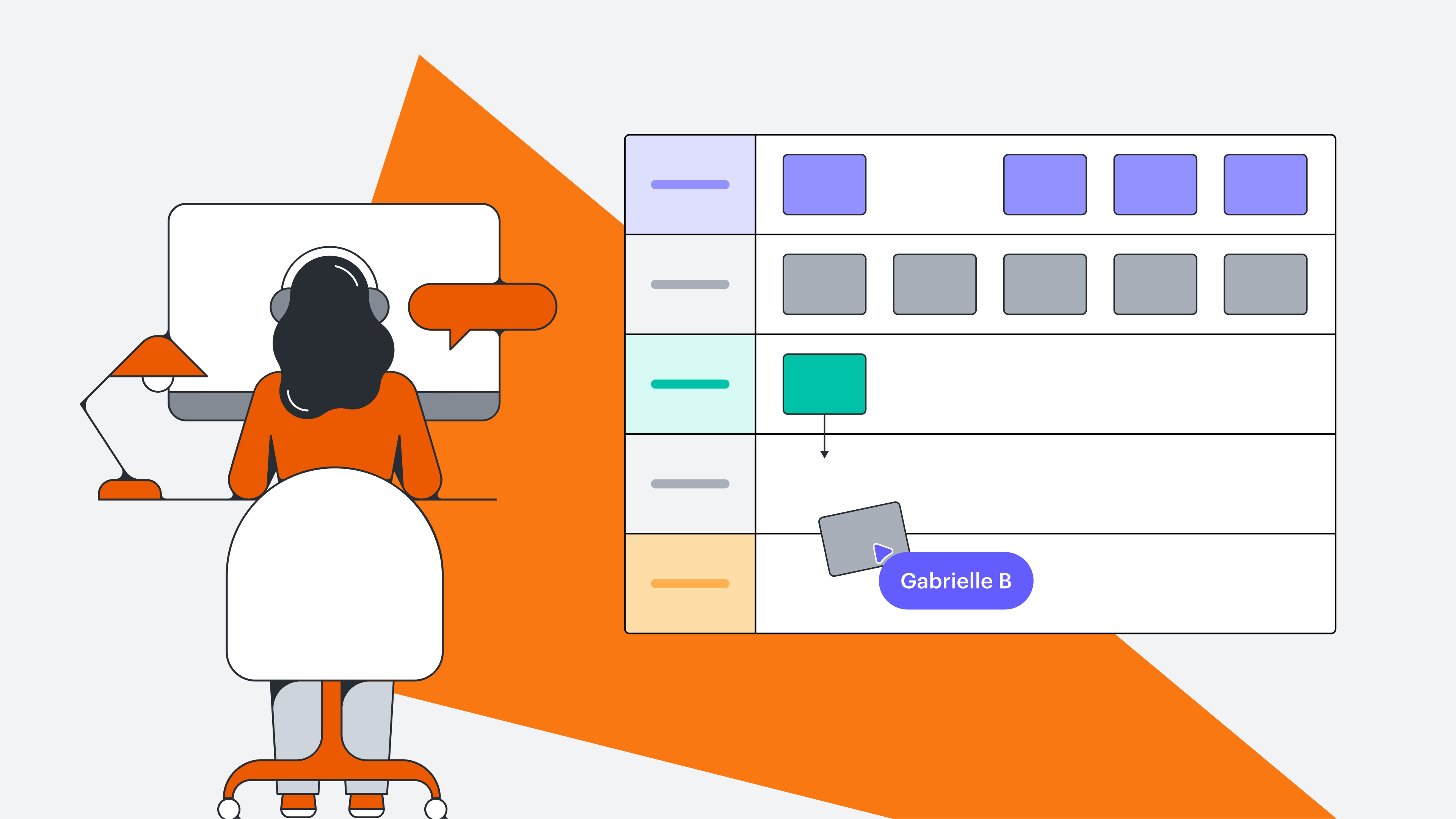Developed by the US Air Force in the 1970s, the Integrated Definition method (IDEF) is a graphical process modeling methodology. It is a way to model the actions and decisions of an organization or system. IDEF is commonly used by business strategists, software developers, QA analysts, and more to model and improve their processes.
In this article, we will explore what IDEF diagrams are and their benefits. We’ll also share free IDEF diagram templates you can use with your team!
What are IDEF Diagrams?
IDEF diagrams provide a visual blueprint for a system. They help teams communicate better, document clearly, and optimize processes. Different IDEF diagrams exist, but the most common types are IDEF0 and IDEF1.
IDEF0: This type of diagram is used for function modeling. It visually maps out all the functions in a system. The IDEF0 diagram contains different cells with boxes representing the functions and arrows showing the flow of inputs, outputs, controls, and mechanisms entering or leaving the box.
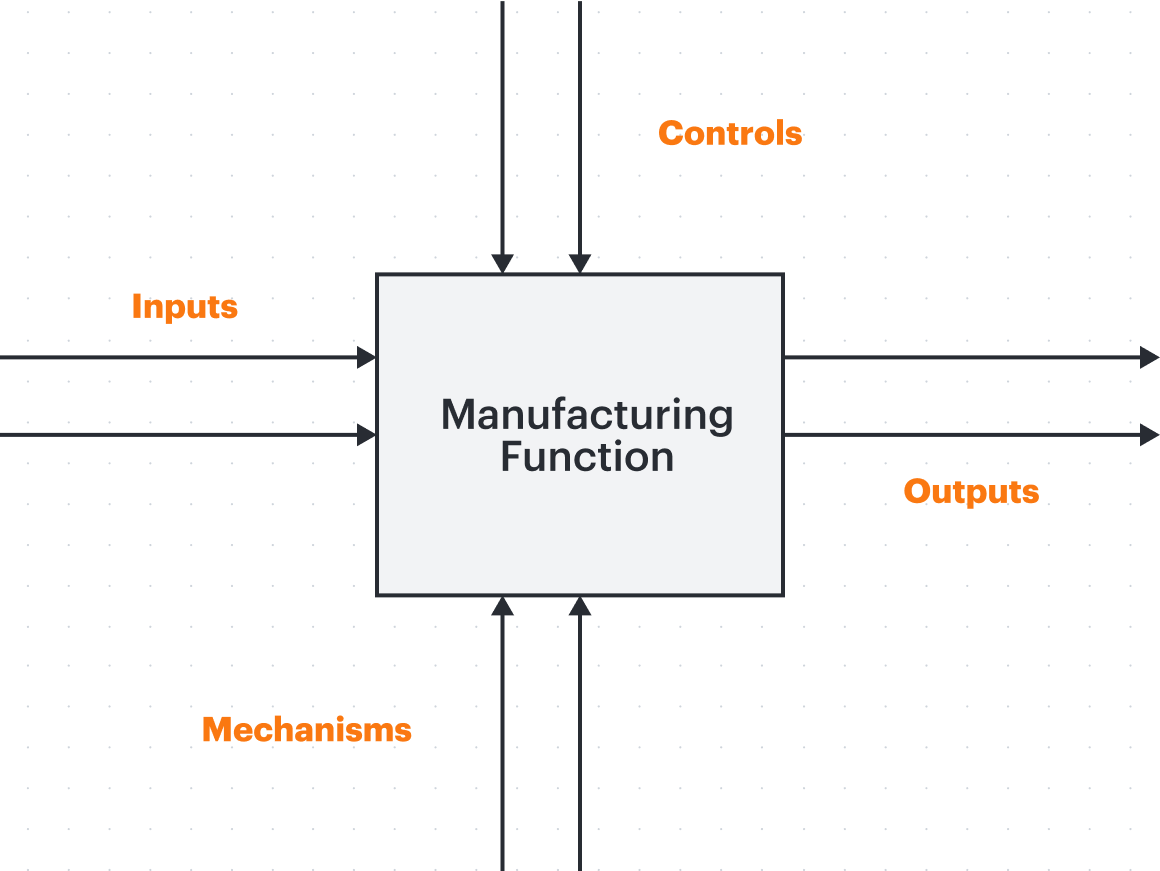
IDEF1: This type of diagram is used for data modeling. It visually defines a system's entities, attributes, and the relationships between them. It helps teams proactively design a structured database that maintains data integrity.
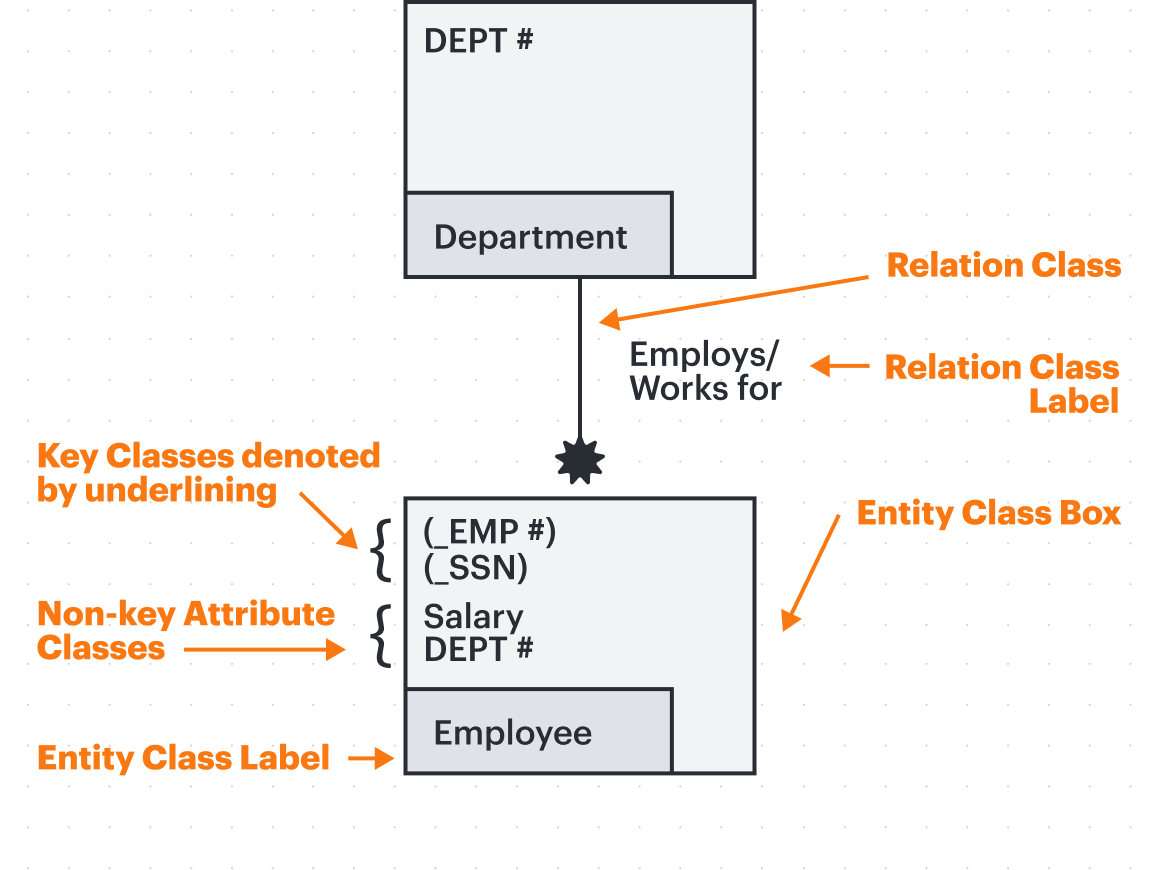
The benefits of IDEF diagrams
IDEF is versatile, accommodating a variety of industries. The diagrams are straightforward to follow, even for non-technical teams. This simplicity helps streamline communication among cross-functional teams, creating a common language and minimizing discrepancies.
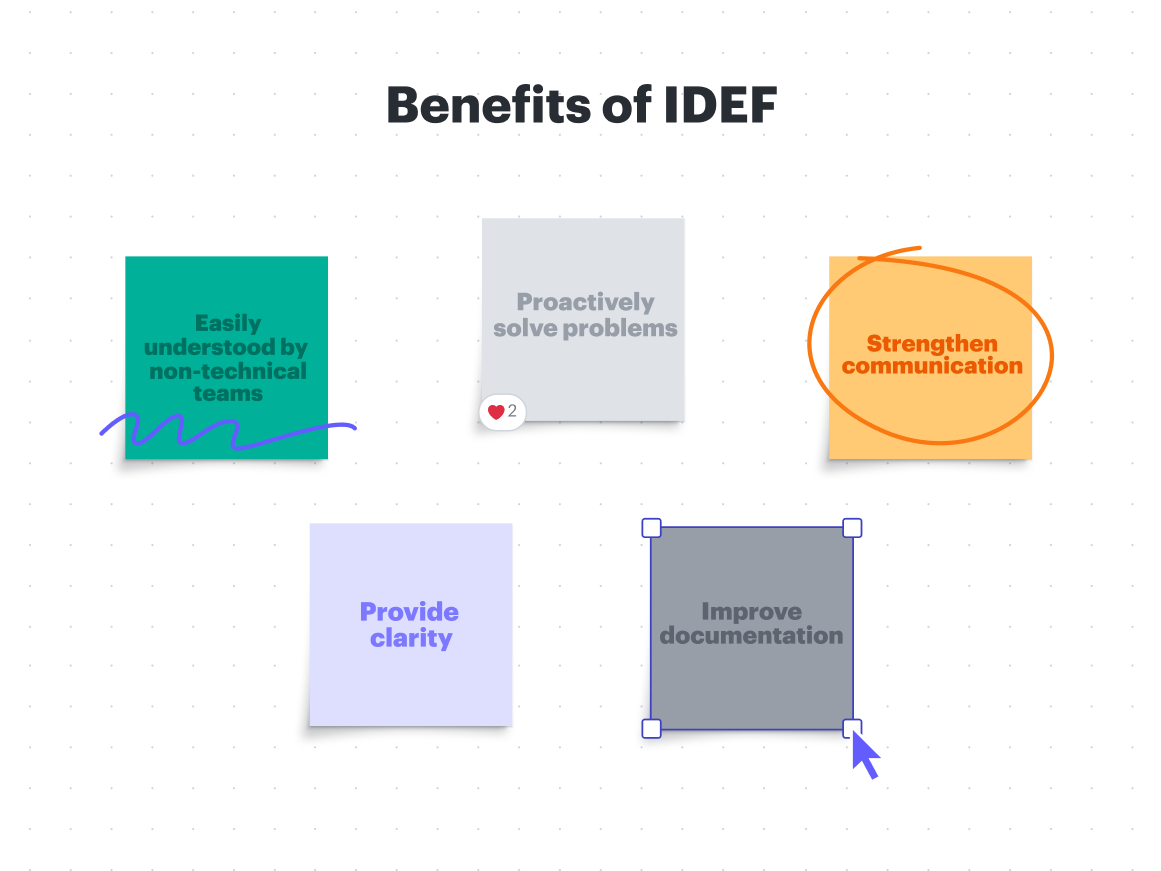
The IDEF family of methods
Beyond the two IDEF models we’ve mentioned, IDEF0 and IDEF1, an entire family of methods is used for mapping, analyzing, and designing systems and processes. Each method addresses different aspects of a system. Take a look at the various methods below:
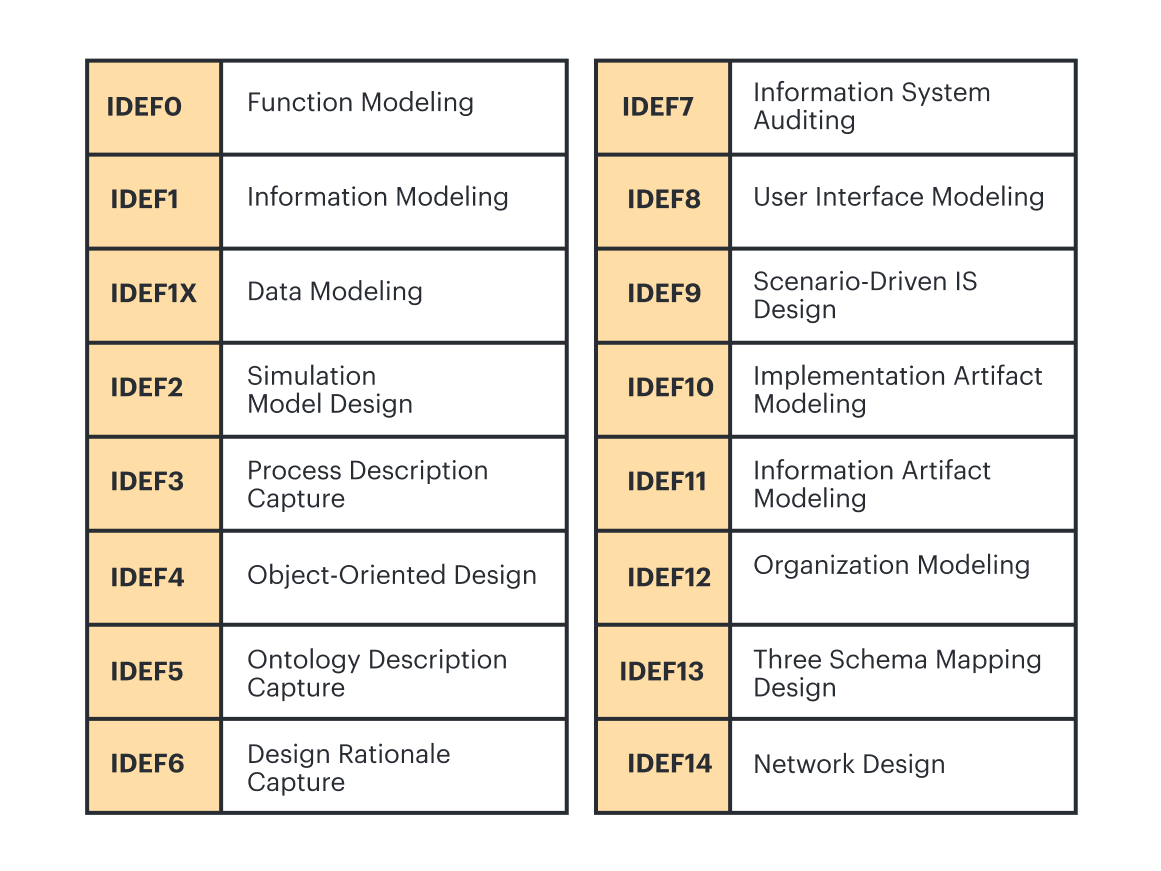
Having clearly mapped systems and processes will allow your teams to align faster and solve problems proactively. If you use the IDEF templates in Lucid, you can customize the model for your unique needs, create a diagram key, and even summarize the contents of your diagram using AI.
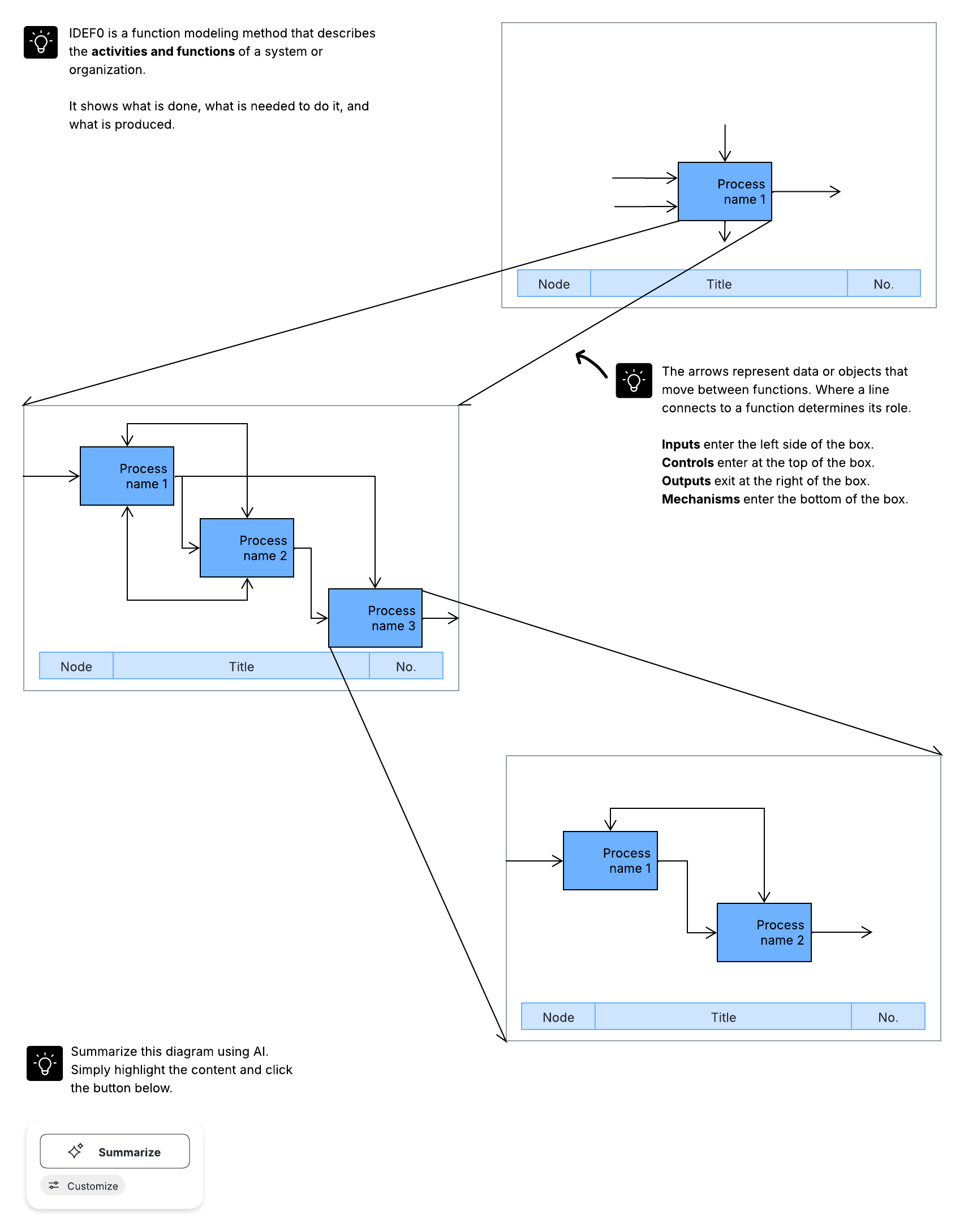
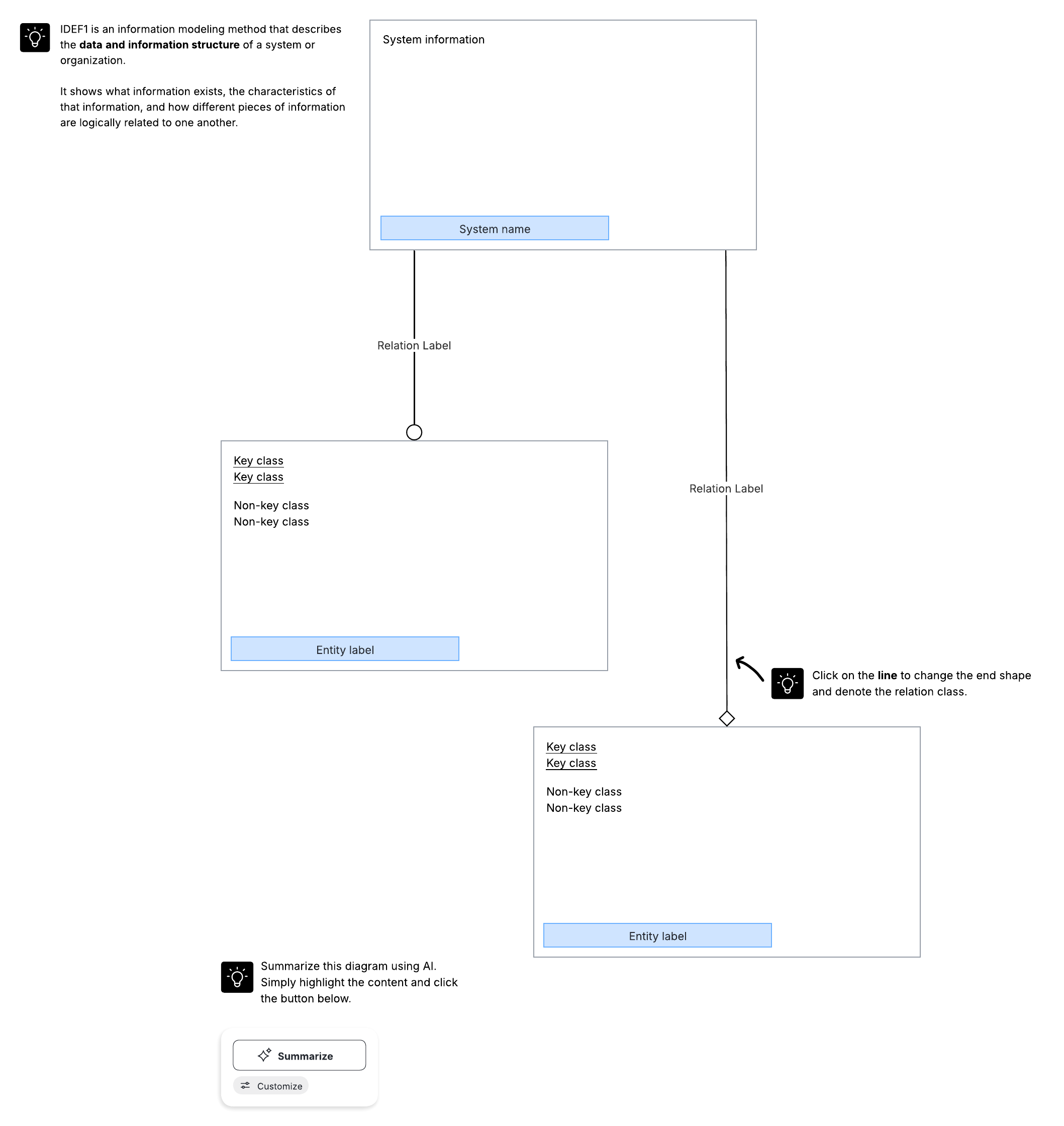
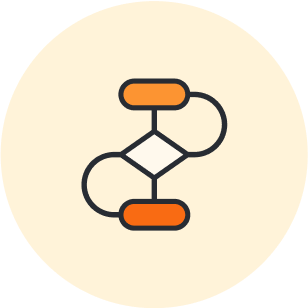
Learn how to diagram with ease with our seven tips.
See nowAbout Lucidchart
Lucidchart, a cloud-based intelligent diagramming application, is a core component of Lucid Software's Visual Collaboration Suite. This intuitive, cloud-based solution empowers teams to collaborate in real-time to build flowcharts, mockups, UML diagrams, customer journey maps, and more. Lucidchart propels teams forward to build the future faster. Lucid is proud to serve top businesses around the world, including customers such as Google, GE, and NBC Universal, and 99% of the Fortune 500. Lucid partners with industry leaders, including Google, Atlassian, and Microsoft. Since its founding, Lucid has received numerous awards for its products, business, and workplace culture. For more information, visit lucidchart.com.
Related articles
The 411 on Business Process Modeling
Business process modeling helps companies document and assess their business processes and workflows so they can adapt and improve with precision and effectiveness. Learn how BPM can support your company’s initiatives for long-term growth and success.
Diagramming basics: A BPMN tutorial
Learning to diagram with BPMN will increase your professional value and facilitate communication. Check out this easy BPMN tutorial to get started.
Create diagrams faster using automation features in Lucidchart
Working visually shouldn’t mean more work for you. Find out how to automate your diagramming with Lucidchart to help your teams do more faster.

